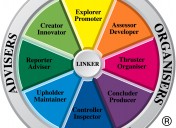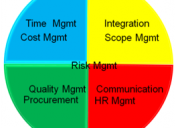8 Expert Communication techniques to manage change successfully
Organisational change can be like the start of a marathon. There are lots of people waiting to begin, but the leaders at the front have their eyes on a good result, and they are experienced and have a strategy in mind. At the back of the pack, most people don’t realise the race has even started. They’re waiting for the people ahead of them to move. By the time they cross the start line, the leaders are well into the race and have the end in sight.
Organisational change is a team event
Applying our marathon analogy to organisational change, we can see how senior managers, the leaders of the pack, can be so far ahead that they forget that others are only just starting out.
It’s important to remember that organisational change is a team event and that no one wins until everyone crosses the line.
1. Prioritise communication
While some people love change, many people find it difficult. Everyone will go through transitions at different rates and have different reactions to them. Feelings of loss, grief, fear and anxiety are just as common as feelings of excitement, relief and optimism.
TIP: Prioritising frequent communication will help you understand the changes happening around you and allow you to address issues before they become problems.
2. Put boundaries around the change
It is common for people to think that everything is changing, but this is rarely the case. It’s important to be clear about what is changing and what will stay the same in order to put the change in perspective.
TIP: Clearly communicate the purpose and vision for the change in everyday language, using examples that will help everyone visualise the journey ahead.
3. Don’t be afraid to repeat yourself
It’s easy to think that because some information has been made available that it doesn’t need to be revisited, but did everyone hear the message? Did they understand the message? Anyone feeling threatened or anxious will not absorb information quickly, and they will be more inclined to reject what they hear, at least initially.
TIP: Provide information again and again, using different channels, especially early in the change process.
4. Expect expressions of grief
It’s also important to expect emotional expressions of grief and then to empathise and acknowledge losses openly. Listening to concerns without judgement and defensiveness will help staff members feel that their pain is acknowledged and understood, and they will accept the changes more easily.
TIP: Allow people to vent and let off steam without getting defensive.
5. Always keep channels open
Communication is a conversation. A change leader should spend time speaking with people in small groups, regularly and often. As a leader, you should always be available for questions and clarification and make it a priority to provide sincere and honest responses.
TIP: Communicate frequently, using a variety of methods and channels. Provide frequent opportunities and forums for feedback and questions.
6. Don’t wait for milestones
Communicating often will help ensure that everyone understands how the change is progressing around them and will avoid rumours starting in the absence of any real information.
TIP: If details and decisions might change, be honest. It’s better for people to know a little bit of information that may change than to be left to fill in gaps on their own.
7. Let your team leaders and supervisors help
Train your team leaders and supervisors to understand change and how to communicate during change, but don’t rely on them to filter all information down to staff. After all, supervisors and first line managers are experiencing the changes themselves and may not yet be able to explain them accurately.
TIP: Invest time in communicating with team leaders in small groups. Provide as much information as you have to them and encourage their feedback and input.
8. Create forums to stay connected
Staying connected through the process of change is critical to its success. It is common for people to feel isolated, as though they are going through the changes alone. Knowing that others are going through feelings of anxiety, confusion and frustration can be comforting and help people feel united in their experience.
TIP: Use training as a form of interactive communication and as an opportunity for people to safely explore new behaviours and ideas about the change. All levels of management should participate in the sessions to build connections.
And remember, communication is your greatest tool in successfully managing organisational change. Bring everyone across the finish line together to feel as if they’ve won.
Contributor – Agapi, Ancora Learning Specialist Facilitator
Agapi Markogiannakis is an engaging and vibrant facilitator, with over 20 years experience in the corporate sector, facilitating and designing training and development programs. In both her senior operational leadership and facilitation roles, Agapi consulted for internal clients and managed the redevelopment of a Leadership and Management suite of programs, ranging from front line supervisory skills to residential management programs for senior managers.
Do you need help managing business change or helping your people make small but significant changes in behaviours, actions or performance?
Call us on 1300 ANCORA (1300 262 672)



















